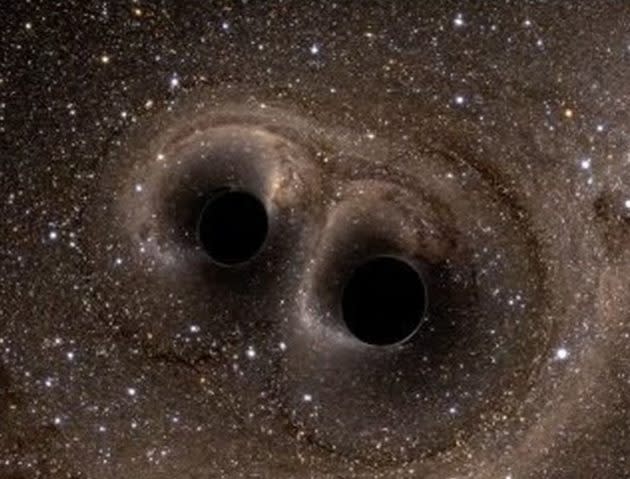Biggest ever black hole collision is detected by scientists

‘Ripples’ in space and time have reached our planet from an almost unimaginably huge collusion in a distant galaxy – two black holes crashing into each other.
Scientists detected gravitational waves from the collision, which led to the two black holes forming a new, huge black hole 80 times larger than our sun.
It was one of four detections announced this week, using data from the Advanced Laser Interferometer Gravitational-wave Observatory (LIGO) which detects gravity waves, tiny ripples in space and time.
Professor Susan Scott of Australian National University (ANU) said that the event occurred nine billion light years away (and nine billion years ago).
The ripples were detected from the merger on 29 July 2017.
‘This event also had black holes spinning the fastest of all mergers observed so far. It is also by far the most distant merger observed,’ Professor Scott said.
The three other black-hole collisions were detected between 9 and 23 August 2017, were between three and six billion light-years away and ranged in size for the resulting black holes from 56 to 66 times larger than our Sun.
MORE: Teens and children had 45,000 operations to remove teeth last year
MORE: Theresa May’s Brexit plan is a deal ‘in name only’, says latest minister to quit
‘These were from four different binary black hole systems smashing together and radiating strong gravitational waves out into space,’ said Professor Scott.
‘These detections of black-hole collisions greatly improve our understanding of how many binary black hole systems there are in the universe, as well as the range of their masses and how fast the black holes spin during a merger.’
The researchers plan to continually improve the gravitational wave detectors so they can detect cataclysmic events much further out in space, one day hoping to reach back to the beginning of time just after the Big Bang – which cannot be done with light.
After the initial observing runs were concluded, scientists recalibrated and cleaned the collected data.


